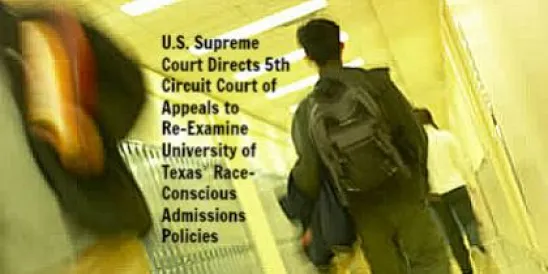Educational institutions employ students in a variety of positions including work-study positions, teaching and research assistantships, and resident assistantships. This four-part series will discuss several issues that have arisen under the Affordable Care Act’s (ACA) employer shared responsibility mandate with respect to those student workers.
Our first issue: Can an educational institution exclude all student workers from its health care?
First things first. The basics of the ACA’s employer shared responsibility mandate are probably old news to you at this point, but (just in case) here’s an over-simplified summary. Employers who averaged 50 or more “full-time” and “full-time equivalent” employees on business days during the preceding calendar year are called “applicable large employers” and are subject to the mandate. A “full time” employee is a common law employee of the applicable large employer who averages 30 or more “hours of service” (generally, paid hours) per week.
Each applicable large employer has three basic (oversimplified) compliance options:
-
Offer “minimum essential coverage” (MEC) that is “affordable” and provides “minimum value” to at least 95% of full-time employees and dependents. In this case, no penalty is incurred.
-
Offer MEC to at least 70% (95% starting in 2016) of full-time employees and dependents that either is not “affordable” or does not provide “minimum value”. In this case, the applicable large employer incurs a penalty of $250/month ($3000/year) for each of its full-time employees receiving a premium subsidy on an exchange.
-
Do not offer MEC at all or offer MEC to fewer than 70% (95% starting in 2016) of full-time employees and dependents. In this case, if any full-time employee receives a premium subsidy on an exchange, the applicable large employer member incurs a penalty of $167/month ($2000/year) for each of its full-time employees, excluding the first 30.
And now to the issue at hand. Can’t an educational institution just exclude students from its offer of health care coverage? Many have done this in the past. What, if anything has changed?
As a general matter, whether an employee is full-time for ACA purposes is based on “hours of service”. If an employee works at least 30 hours of service per week, he or she is full time. If an employer does not offer coverage to that employee, the employer is at risk for an ACA penalty. Put another way, categorical or position-based exclusions from health care eligibility (such as exclusions of temps, co-ops, students, union, casual, students, interns and so on) no longer work.
This is not to say that coverage must be offered to all student workers. Here are a few strategies and nuances to consider:
-
Although there is no blanket exclusion for student employees, hours of service performed by students in positions subsidized through the federal work study program (34 CFR Part 675) or a substantially similar state program need not be counted as “hours of service.” Accordingly, many work-study students will not have enough “hours of service” to be considered full-time employees.
-
Many student workers simply do not work 30 hours per week. Also, employers may consider hours caps, but should be wary of a possible cause of action under ERISA 510 if existing work schedules are reduced to avoid ACA penalties.
-
An employer may continue to exclude students as part of its overall compliance strategy, but may be required to pay a tax penalty if one or more of the students obtains subsidized coverage on an exchange.
In sum: educational institutions should not assume that they can exclude student workers from an offer of health care coverage and also avoid a tax penalty under the ACA’s employer shared responsibility mandate. Further analysis into the hours worked by the students, in the context of the employer’s overall compliance strategy, is in order.
Coming Later This Week: Can an offer of student coverage count as an applicable large employer’s “offer” of coverage?




 />i
/>i

